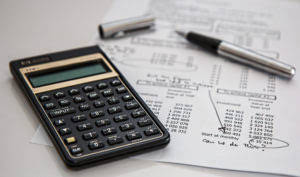
The English word “petty” derives from the French petit, which means “small” or “little.” Likewise, “petty” means minor or insignificant. So petty cash refers to a small sum of money set aside for trifling or little purchases, as opposed to major expenses or bills. Commercial transactions are increasingly cashless—even at small retailers and restaurants, where purchases traditionally have relied heavily on coins. On the downside, the convenience of petty cash can also make it a problem, and a risk. Cash is hard to secure and impossible to track; it’s very easy for bills to disappear without a trace—even if you’ve established a careful system of receipts or vouchers. The Internal Revenue Service (IRS) recommends filing out petty cash slips and attaching them to receipts to record and document petty cash expenses.
What is Petty Cash? Definition, Usage, and Accounting for Petty Cash Accounts
Whatever steps are deemed necessary (such as surprise counts) should be performed to assure that controls are adequate. Adam Hayes, Ph.D., CFA, is a financial writer with 15+ years Wall Street experience as a derivatives trader. Besides his extensive derivative trading expertise, Adam is an expert in economics and behavioral finance. Adam received his master’s in economics from The New School for Social Research and his Ph.D. from the University of Wisconsin-Madison in sociology. He is a CFA charterholder as well as holding FINRA Series 7, 55 & 63 licenses. He currently researches and teaches economic sociology and the social studies of assets = liabilities + equity finance at the Hebrew University in Jerusalem.
- Often, a few individuals are authorized to approve disbursements and can only do so for expenses related to legitimate company activities or operations.
- The reconciliation is straightforward—every time you take cash out of the box, you replace the cash with a receipt for the same amount.
- But it would help if you had a designated spot to keep your cash and petty cash log – preferably one that can be locked.
- It can be in the form of actual money, like amounts you haven’t yet deposited in the bank or smaller bills and coins that you keep in the cash register to make change for customers.
- Whether this is once per week or once per month will depend on the number of transactions made with petty cash.
- Balancing and monitoring funds regularly involves additional administration, which can be a trivial annoyance in large firms but may impose an extra burden on small businesses.
How Do You Balance Petty Cash in Accounting?

Some examples may include snacks, transport fares, office supplies, etc. For this reason, your custodian will fill out a receipt when disbursing money to ensure that the total money will add up to the initial amount of your petty cash fund. The amount of petty cash allowed within a company can vary, typically ranging from $50 to $500 depending on the size and needs of the business. It’s determined by estimating the small, incidental expenses that occur within a set time frame. Most companies maintain a petty cash fund balance of anywhere from $100 to $500, but the amount will depend on your petty petty cash cash needs.
- A petty cash fund provides an efficient way of handling these payments.
- Heather needs a $315 reimbursement to bring the petty cash balance back to $500.
- But this is supposed to help the key holders keep track of what is spent where, as well as how much petty cash is available.
- The journal entry to fund petty cash would debit the account and credit to cash bank account.
Exchange the Receipt For a New Check
- An increasing dependence on credit, debit cards and mobile payments in the UK means that the forward-thinking company is quickly catching up to our near cashless society.
- First, add up the vouchers to calculate the total expenditures for items like office supplies or postage, ensuring any cash reimbursement is accounted for.
- Steps to minimize abuse include limiting the amount that can be disbursed through petty cash, requiring receipts, and monthly audits by a responsible person other than the custodian.
- In our example above, we asked for $315 as replenishment because it’s the amount of total receipts.
For example, when you sell $100 worth of merchandise to Partnership Accounting customer “a”, debit sales for $100 and credit cash for $100. To accomplish the reimbursement, the treasurer’s office provides the requested amount (by check or currency) to the custodian. The size of the fund depends on the company’s needs, but it should be large enough to last at least three to four weeks. In most companies, there are many occasions when a small amount of cash must be spent at short notice. If you need to replenish the funds every few days, it probably means your fund is too small. The security aspect is often important to small companies, who have long feared that keeping cash around is an invitation to crime.

If you plan to use petty cash for small business purchases like postage and office supplies, it may be handy to use the petty cash log to keep track of your transactions. Keeping careful records of cash expenditures will be a huge help when it comes time to reconcile your petty cash account. However, using accounting software, like QuickBooks Online, can make managing petty cash expenses easier and faster because it simplifies the recording of expenses. Petty cash refers to a small amount of money set aside by a business to cover minor expenses that do not require the use of checks or banking services. These expenses may include office supplies, employee reimbursements, or small purchases.

